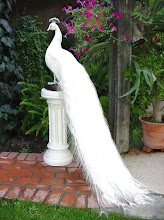Unlocking the Mystery of Om
Om (also written Aum) is the oldest and most sacred sound found in yoga, Hinduism and Buddhism. Not only does Om represent the entire universe, known as Brahman, it is also said to be the source of all creation. Om represents all time: past, present, and future; and is beyond time itself. Om represents the eternal oneness of all that is, and thus represents the ultimate goal of yoga: to become unified in body, mind and spirit. Chanting the mantra Om is perhaps the oldest of yoga’s spiritual practices. In the Mandukya Upanishad we find this beautiful passage: “The body is the bow, Om is an the arrow, the arrow’s tip is the focused mind, and the ultimate Mystery is the target.” Thus, meditating on Om is used to guide one to discovering the higher Self, and the true nature of the universe. The Yoga Sutras of Patanjali instructs one in contemplating the meaning of Om as a direct path to enlightenment. “The repetition of the sound of Om, along with a deep contemplation of the meaning of what it represents, brings both the realization of the individual Self (Atman) and the removal of obstacles that normally block this realization” (Yoga Sutras 1.27-1.29).
Om is said to be the essence of all mantras, and is used as the mula-mantra, the root and beginning of most mantras. Om is the bija (seed) mantra of the sixth chakra or third eye and chanting Om activates and opens this energy center. Om is also known as the adi-bija, the primary seed mantra. Om is used within sacred chants to increase their power and potency as well as to draw the practitioner into a deep internal state.
It is very important when repeating Om to pronounce the "O" sound correctly. In Sanskrit, the sound "O" is a diphthong-- a subtle speech sound that begins with one vowel and changes to another vowel within the same syllable. This “O” sound begins with an “A” sound as in “law” and ends with a “U” sound as in “put.” When these two vowel sounds are combined in this diphthong, it produces a single, pure vowel sound. Thus, when you pronounce Om it should sound like “home” without the beginning “h” sound. When pronouncing Om the sound should emanate from the navel, with a deep and harmonious vibration, and gradually rises upwards to resonate in the nostrils.
Though indivisible, Om has four subtle sounds that correspond to four levels of consciousness. The first sound of "A" represents Vaishvanara, the conscious waking state. The second sound of "U" represents Taijasa, the subtle, unconscious dream state. The third sound of "M" represents the Prajna, the casual, subconscious deep sleep state. The fourth sound is the silence that follows the sound of Om which represents Turiya, the absolute consciousness that illumines and pervades the three prior states.
When chanting Om, equal measure should be given to both the “O” and the “M” sounds, i.e. “oooommmm” and not “oommmmmm” or “oooooomm.” The mantra Om may be chanted aloud, whispered, or repeated mentally. The chanting of Om should be easy and natural, without strain. Usually when Om is chanted out loud it is long and when chanted mentally is it short, but experiment and do what feels most comfortable for you. When chanting Om you can also focus your gaze on the third eye center, the sixth chakra. If using Om as a mantra meditation you may wish to use a mala to count repetitions of 108.
skip to main |
skip to sidebar

smart
pea cock

smart
indianhot2
indianhot1
I P counter

Powered byIP2Location.com
eenadu
Blog Archive
-
▼
2008
(326)
-
▼
February
(243)
- aartical240
- aartical239
- aartical238
- aartical237
- aartical236
- aartical235
- aartical234
- aartical233
- aartical232
- aartical231
- aartical230
- aartical229
- aartical228
- aartical227
- aartical226
- aartical225
- aartical224
- aartical223
- aartical222
- aartical221
- aartical220
- aartical219
- aartical218
- aartical217
- aartical216
- aartical215
- aartical214
- aartical213
- aartical212
- aartical211
- aartical210
- aartical209
- aartical207
- aartical206
- aartical205
- aartical204
- aartical203
- aartical202
- aartical201
- aartical200
- aartical199
- aartical197
- aartical196
- aartical195
- aartical194
- aartical193
- aartical192
- aartical191
- aartical190
- aartical189
- aartical188
- aartical187
- aartical186
- aartical185
- aartical184
- aartical183
- aartical182
- aartical181
- aartical180
- aartical179
- aartical178
- aartical177
- aartical176
- aartical175
- aartical174
- aartical173
- aartical172
- aartical171
- aartical170
- aartical169
- aartical168
- aartical167
- aartical166
- aartical165
- aartical164
- aartical163
- aartical162
- aartical161
- aartical160
- aartical158
- aartical157
- aartical156
- aartical155
- aartical154
- aartical153
- aartical152
- aartical151
- aartical150
- aartical149
- aartical148
- aartical147
- aartical146
- aartical145
- aartical144
- aartical143
- aartical142
- aartical141
- aartical140
- aartical139
- aartical138
-
▼
February
(243)
No comments:
Post a Comment